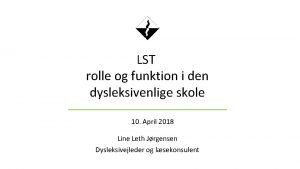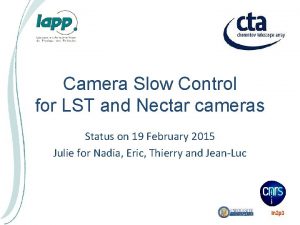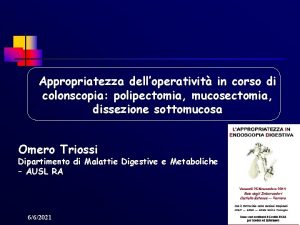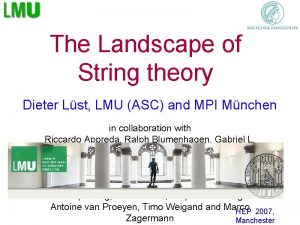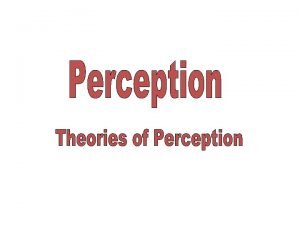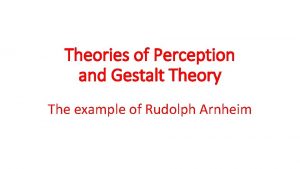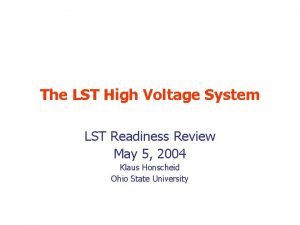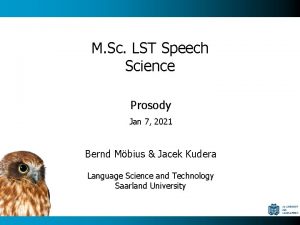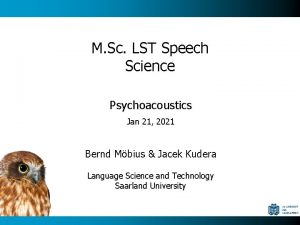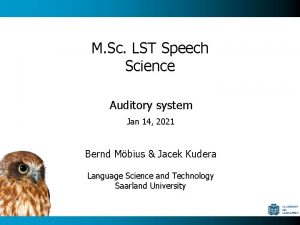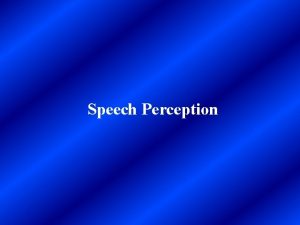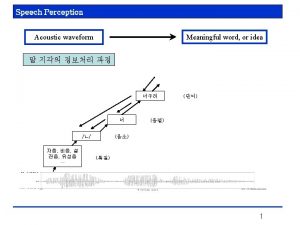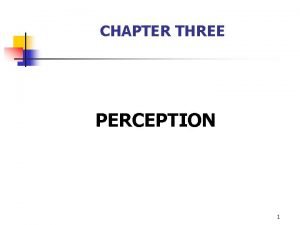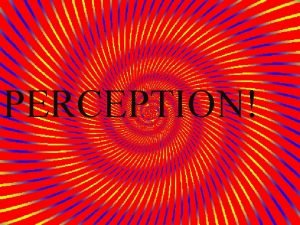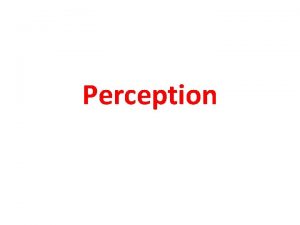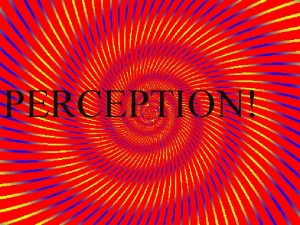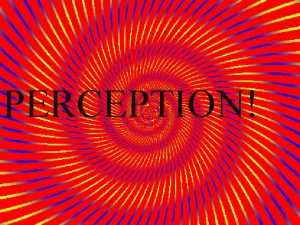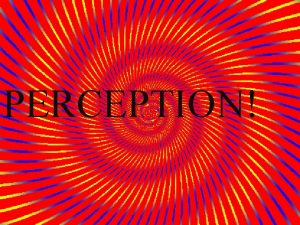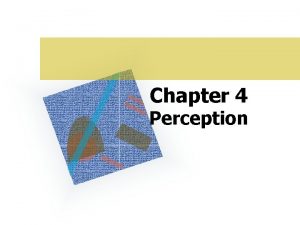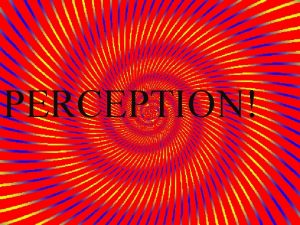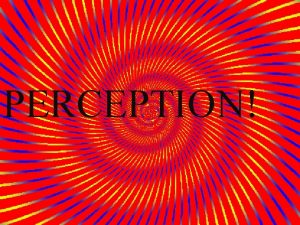M Sc LST Speech Science Speech Perception Jan




![Categorical Perception Identification [Clark and Yallop, 1995, p. 314] Discrimination Categorical Perception Identification [Clark and Yallop, 1995, p. 314] Discrimination](https://slidetodoc.com/presentation_image_h2/b3e38ff79c3bd9a6b6191d902d552d22/image-5.jpg)




![PME [Kuhl 1991] PME [Kuhl 1991]](https://slidetodoc.com/presentation_image_h2/b3e38ff79c3bd9a6b6191d902d552d22/image-10.jpg)
![PME [Kuhl 1991] PME [Kuhl 1991]](https://slidetodoc.com/presentation_image_h2/b3e38ff79c3bd9a6b6191d902d552d22/image-11.jpg)








- Slides: 19

M. Sc. LST Speech Science Speech Perception Jan 28, 2021 Bernd Möbius & Jacek Kudera Language Science and Technology Saarland University

Overview § Categorical Perception § Perceptual Magnet Effect § Multimodal perception

Categorical Perception § phenomenon: § speech stimuli are not perceived continuously in auditory-perceptual space § stimuli are classified as belonging to categories

Categorical Perception § test: § presentation of a continuum of speech stimuli between 2 categories (e. g. phonemes: /pa/ - /ba/) § stimulus construction by editing natural speech or by speech synthesis § combination of 2 tasks § identification: 1 stimulus § discrimination: pair of stimuli
![Categorical Perception Identification Clark and Yallop 1995 p 314 Discrimination Categorical Perception Identification [Clark and Yallop, 1995, p. 314] Discrimination](https://slidetodoc.com/presentation_image_h2/b3e38ff79c3bd9a6b6191d902d552d22/image-5.jpg)
Categorical Perception Identification [Clark and Yallop, 1995, p. 314] Discrimination

Categorical Perception § CP is demonstrated if § listeners assign each stimulus to one of the offered categories and recognize categories of speech but not intermediary steps § identification is optimal within category boundaries but at chance level at category cross-over § discrimination is weaker within category boundaries § the maximum of the identification function coincides with the maximum of the discrimination function (category switch at same location in acoustic/auditory space) § Categories and category boundaries are language-specific

Categorical Perception § Examples of speech sound contrasts explored in the CP paradigm: § voice onset time (VOT) of stop consonants (/pa/ - /ba/) § place of articulation of stop consonants (/ba/ - /da/ - /ga/) § fricatives vs. affricates (/sa/ - /tsa/) § manner of articulation (/ba/ - /wa/, /la/ - /ra/) § vowel quality: less clear categoriality, hints of continuous perception § prosodic features: categoriality doubtful, mainly continuous perception § most experiments done for English § Review paper: Repp (1984)

Categorical Perception § CP has also been observed in § infants preceding language and speech acquisition § apes, monkeys, rabbits, chinchillas, some birds without phonemebased, linguistic communication § experiments involving non-speech signals subjects not in linguistic perception mode § CP appears to be a generic auditory or even generic perceptual phenomenon, rather than a specifically language-based one § Online experiment: § [http: //www. ling. gu. se/~anders/Kat. Per/Applet/test. eng. html] (does not always work reliably – we will use our own tool)

Perceptual Magnet Effect § Infants can discriminate speech sounds of all languages, but with advancing L 1 acquisition some of the contrasts lose their discriminability § Sound categories become established around the most typical, i. e. prototypical, exemplar § Prototype functions like a magnet § perceptual space is warped by shrinking the auditory distance between exemplars in the vicinity of the prototype – a magnet effect § reduced discrimination sensitivity between prototypes and similar exemplars § effective within categories
![PME Kuhl 1991 PME [Kuhl 1991]](https://slidetodoc.com/presentation_image_h2/b3e38ff79c3bd9a6b6191d902d552d22/image-10.jpg)
PME [Kuhl 1991]
![PME Kuhl 1991 PME [Kuhl 1991]](https://slidetodoc.com/presentation_image_h2/b3e38ff79c3bd9a6b6191d902d552d22/image-11.jpg)
PME [Kuhl 1991]

PME § available evidence § /i/ - /e/ contrast § /r/ - /l/ contrast § English, Japanese § adults, infants, monkeys § German boundary tones [Schneider et al. , 2005, 2006, 2009]

PME § test – 3 tasks § identification - cf. CP – stimulus construction:

PME § test – 3 tasks § identification - cf. CP § goodness rating – for P and NP exemplars of target category:

PME § test – 3 tasks § identification - cf. CP § goodness rating § discrimination - cf. CP, except that stimulus pairs are § P + neighbor(s) § NP + neighbor(s) § expected result (see above) § discrimination sensitivity reduced around P but not NP

Multimodal Perception § Perceptual fusion of multimodal stimuli § Mc. Gurk effect [Mc. Gurk and Mac. Donald, 1978]: § visual stimulus: [ga] § acoustic stimulus: [ba] § multimodal perception: [da] !! § Online demos: § [http: //www. youtube. com/watch? feature=endscreen&NR=1&v=jtsfid. Rq 2 tw] § [http: //www. youtube. com/watch? v=a. FPtc 8 BVd. Jk&NR=1]

References § John Clark, Colin Yallop, and Janet Fletcher (2007): An Introduction to Phonetics and Phonology. 3 rd edition (2 nd ed. Clark&Yallop 1995). Blackwell, Oxford. § E. Bruce Goldstein (1997): Wahrnehmungspsychologie. Spektrum Akademischer Verlag, Heidelberg. § Keith Johnson (1997): Acoustic and Auditory Phonetics. Blackwell, Oxford. § J. Mac. Donald and H. Mc. Gurk (1978): Visual influences on speech perception process. Perception and Psychophysics 24, 253 -257. § Bernd Pompino-Marschall (1995): Einführung in die Phonetik. De Gruyter, Berlin. § Henning Reetz (1999): Artikulatorische und akustische Phonetik. Wissenschaftlicher Verlag, Trier. § Patricia Kuhl (1991): "Human adults and human infants show a 'perceptual magnet effect' for the prototypes of speech categories, monkeys do not". Perception and Psychophysics 50, 93— 107.

References § Iverson, P. and Kuhl, P. K. (1995): "Mapping the perceptual magnet effect for speech using signal detection theory and multidimensional scaling". JASA 97(1), 553 -562. § Kuhl, P. K. and Iverson, P. (1995): "Linguistic experience and the 'Perceptual Magnet Effect'". In W. Strange (ed. ), Speech perception and linguistic experience: Issues in crosslanguage research. York Press, 1995, 121 -154. § Schneider, K. and Möbius, B. (2005): "Perceptual Magnet Effect in German boundary tones". Proc. Interspeech (Lisbon), 1177 -1189. § Katrin Schneider, Britta Lintfert, Grzegorz Dogil, Bernd Möbius (2006): "Phonetic grounding of prosodic categories". In Stefan Sudhoff et al. (eds. ), Methods in Empirical Prosody Research (De Gruyter, Berlin), 335 -361. § Katrin Schneider, Grzegorz Dogil, Bernd Möbius (2009): "German boundary tones show categorical perception and a perceptual magnet effect when presented in different contexts". Proc. Interspeech (Brighton), 2519 -2522.

Thanks!
 Total float= * 1 point lst-est lst-eft est-lft eft-lst
Total float= * 1 point lst-est lst-eft est-lft eft-lst Est eft lst lft
Est eft lst lft Dysleksivenlige skoler
Dysleksivenlige skoler Nectar camera
Nectar camera Classificazione di parigi polipi
Classificazione di parigi polipi Lmu lst
Lmu lst Est lst eft lft example
Est lst eft lft example Int sum
Int sum Why is science my favourite subject
Why is science my favourite subject Social science vs natural science
Social science vs natural science Mind map branches of science
Mind map branches of science Natural science vs physical science
Natural science vs physical science Applied science vs pure science
Applied science vs pure science Rapid change
Rapid change Science fusion online
Science fusion online Tragedy of the commons
Tragedy of the commons Julie lundquist
Julie lundquist Soft science definition
Soft science definition Gregory's constructivist theory of perception
Gregory's constructivist theory of perception Film als kunst
Film als kunst


